Achingly slow, a twin-engine De Havilland Caribou cargo plane lumbered to 2400 meters above a dry lakebed near Edwards Air Force Base in the high desert north of Los Angeles. In the Caribou’s vibrating belly, draped in shroud lines, a brand-new 1973 MGB shook as if foreseeing its fate. A helmeted driver stood close by, poised to push the MG out into space and leap after it.
“Do it!” crackled a voice over the walkie-talkie. Below, on the dusty desert floor, the creative team of British Leyland’s US advertising department craned their necks skyward like hungry hatchlings in a nest. Relegated to powerless bystanders afflicted with squinting eyes and clenched sphincters, they watched the drogue chute blossom from the open cargo bay. Once fully unfurled, it pulled the 1973 MGB out into space. This time it would work. It had to work. Oh, dear, they prayed, please make it work.

Months earlier, the so-called Parachute television ad, as it would come to be known, seemed so right. Bob Burden, then British Leyland’s advertising manager for MG and Jaguar, needed a “bust out” advertisement for MG, which by 1972 was facing increasingly tougher competition, especially from the Japanese. Dropping a car and a driver separately from a plane, and having them land together on the desert floor and drive off, was the sort of wacko high-concept frolic that could penetrate the fog of what in the 1960s had come to be known as the “vast wasteland” of television.
A robust ad man comfortable with his role in the rough-and-tumble era of midcentury advertising, Burden loved the car business. In addition to possessing an astute feel for the marketplace, he had a great sense of humour and a resonant and ready laugh. After spending four years with the agency that represented Standard Triumph, Burden came to the British Motor Corporation in 1964 as European imports were breaking into the North American market.
As Burden recalled in a 2016 interview, “Initially, I was in the BMC PR Department. In fact, I was the PR Department. That was my business card, ‘PR Department.’” After a few years, Burden’s boss was called back to England, and Burden was asked to look after the advertising at the US subsidiary’s headquarters in Leonia, New Jersey, until, he was told “they can hire somebody competent to run the advertising.” As Burden puts it: “This being a British company, it never got around to hiring anybody competent, so I sort of evolved into that role.”
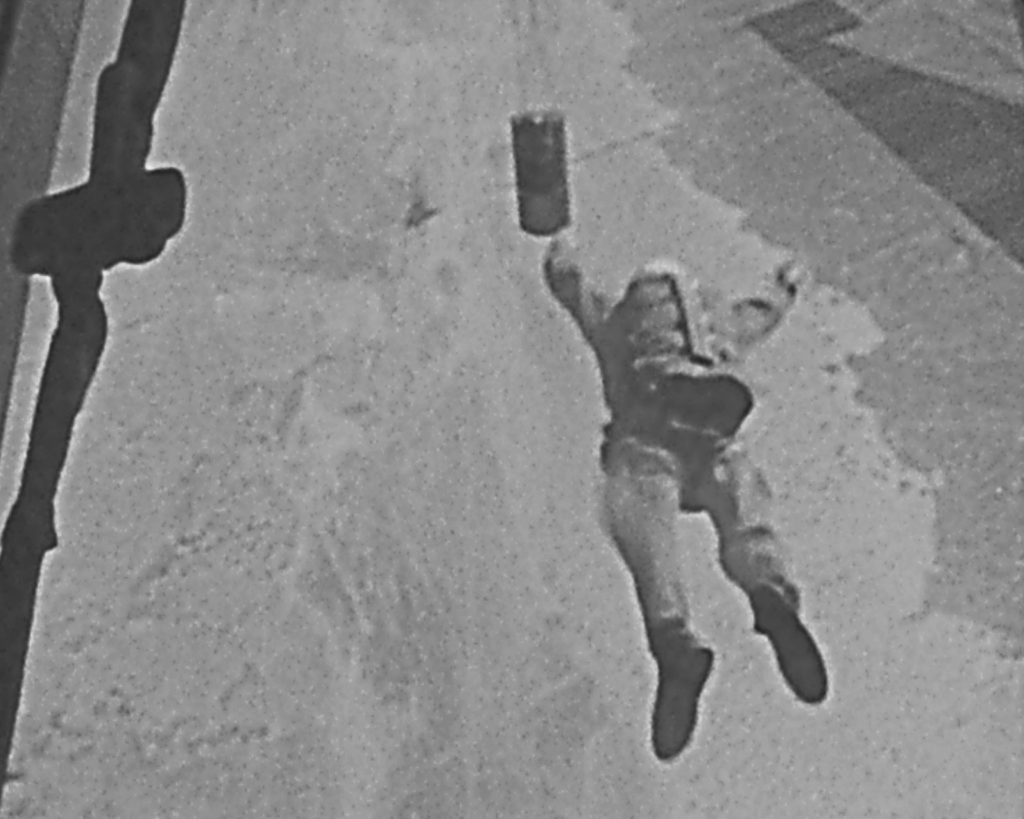
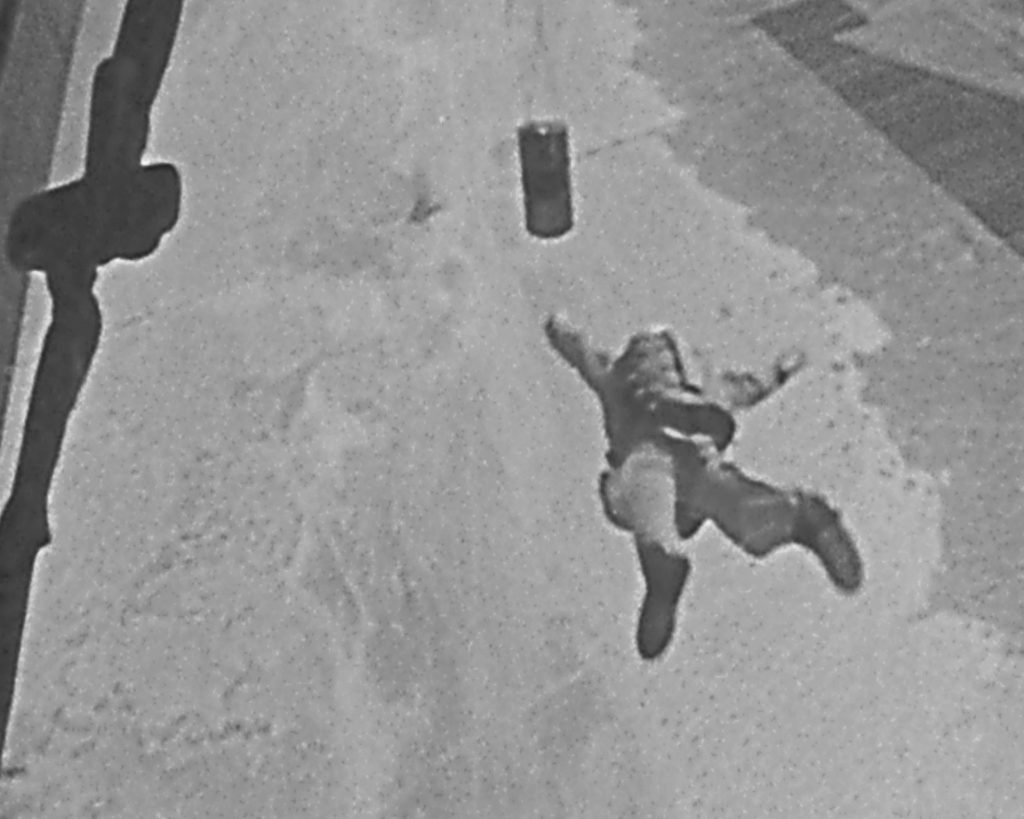
From that point, the British car business grew and consolidated, with BMC joining Triumph and Rover in 1968 to become British Leyland, a government-led shotgun wedding that attempted to create a kind of British General Motors. With expansion came advancement for Burden, who was given the choice of running advertising in the US or running PR, but not both. Burden opted for advertising because, as he told then British Leyland’s US president, Graham W. Whitehead, “I don’t have to be as nice to as many people in advertising as I do if I’m in public relations.”
Burden didn’t embrace the Parachute concept right away when creative director Marce Mayhew, from MG’s ad agency, Bozell & Jacobs, pitched the idea. A Canadian by birth and a graduate of Art Center College in Pasadena, California, Mayhew was a creative force in the age of “mad men.” During his 40-plus-year career, he garnered numerous industry awards. In assessing his longtime colleague, Burden says of Mayhew, “One of Marce’s great strengths was his meticulous attention to detail, and that went into everything. I’m not sure I ever worked with anybody who paid such attention to all aspects of a photographic shoot as Marce did. Marce Mayhew ranked with the great creative directors of his time.”
The need for the bust-out TV spot was glaringly evident to Burden. From his vantage point, MG’s in-house rival, Triumph, enjoyed a stronger market presence because Triumph had the dollars to advertise on television, thanks to a marketing scheme that harnessed funds from the dealers. With no dealer co-op money, MG historically did not have the budget, but that had changed.
Efforts by Mike Dale, British Leyland’s then vice president of US sales, to enlist MG dealers in a cooperative advertising programme made this the right time to elevate MG’s advertising presence. But Dale needed a blockbuster TV spot to gain buy-in from the MG dealers and distributors who would be helping to pay for it. It was up to Burden and Mayhew to make it happen.
Mayhew laid out the concept for Burden’s approval. “Fundamentally,” Mayhew said, “we drop an MGB with a parachute out of a plane from a mile and a half up.” Recalls Burden, “Being the client ad guy in the room, I asked, ‘What is the selling point?’ ”
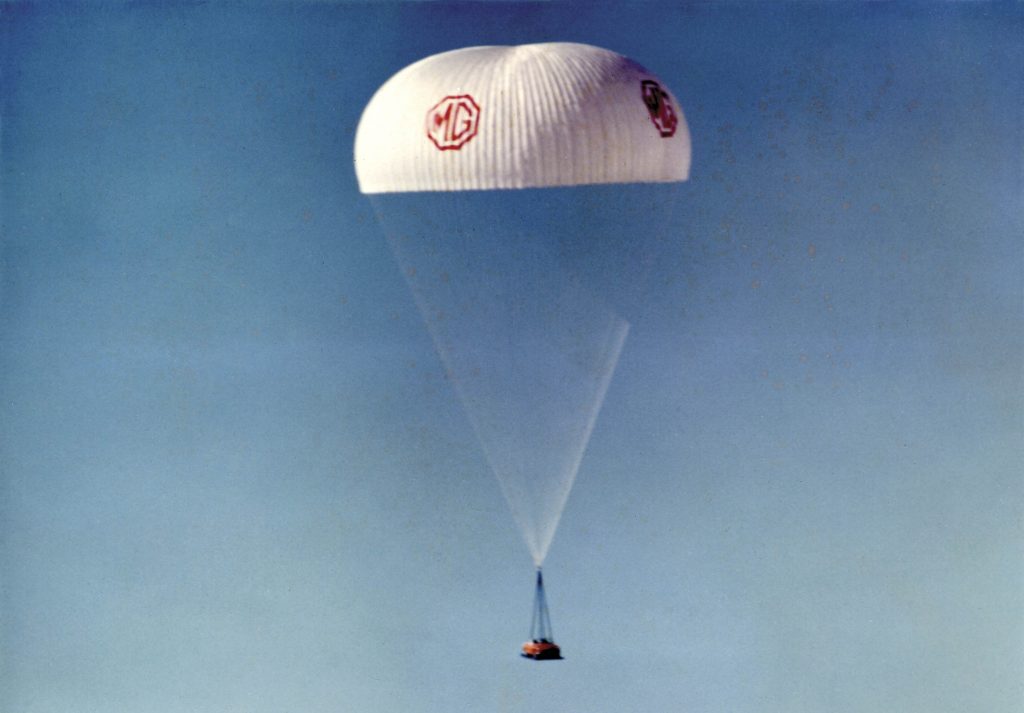
Mayhew explained there would be three competitor cars: a Datsun 240Z, a Fiat 124, and a Porsche 914 driving across the desert leaving plumes of dust in their wake. The MGB would land in front of them. A parachutist, who had jumped from the same plane, would land by the MGB, hop in, and drive away ahead of the competitors. Again, Burden asked, “What is the selling point?” Mayhew responded, “MG, still one jump ahead.” And with that line, Burden was sold.
After a discussion of costs, Burden met with Mike Dale. Equally excited, Dale set up a meeting with Whitehead, his boss. As a former Royal Air Force pilot and, as Dale said later, “the only RAF pilot in the room,” he reassured Whitehead that the RAF did successful parachute drops all the time with military vehicles. Years later, Dale would confess: “I had absolutely no personal basis for making those assurances.”
Dale’s real source of confidence resided in the experienced advertising team of Burden, Mayhew, and Bozell & Jacobs account executive Tim O’Leary. In speaking of that team, Dale said, “They repeatedly brought fresh ideas to our task of marketing ageing products, doing so in the face of strikes and other innumerable hurdles created by a British Leyland management determined to avoid selling anything at too fast a pace.”
For his part, Whitehead responded to Dale’s pitch not so much with a vigorous approval of the plan, but more as a reserved yielding to Dale’s pleadings. For Burden and his cohorts, that was good enough.
British Leyland’s management fortified Burden with an unheard-of budget of $45,000. That sum exceeded anything previously spent on any MG commercial by a factor of ten. The company then sent Burden off with best wishes and a hearty Godspeed. In the minds of Burden and Dale, the send-off included the unspoken message, “Or don’t bother coming back.”
Filming would take place in the Mojave Desert of California over a dry lakebed near Edwards Air Force Base, site of Chuck Yeager’s first blast through the sound barrier in 1947. The area offered an expanse with no distracting backgrounds to detract from the spectacle that Burden and Mayhew sought to capture.
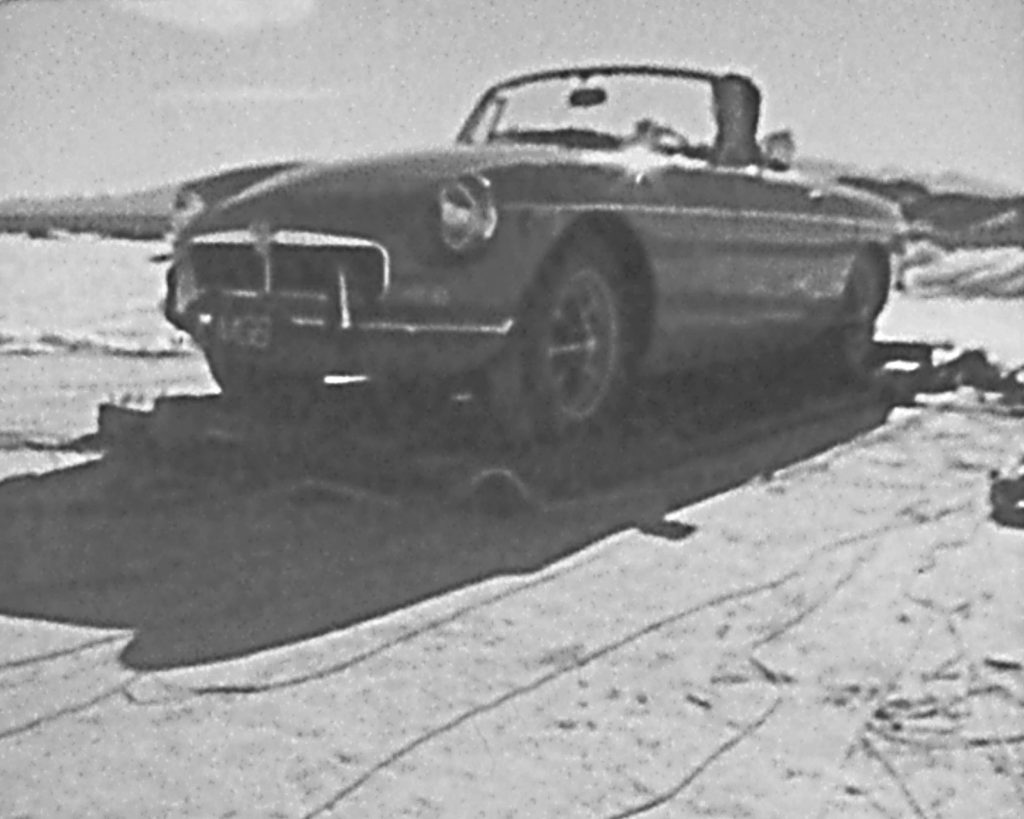
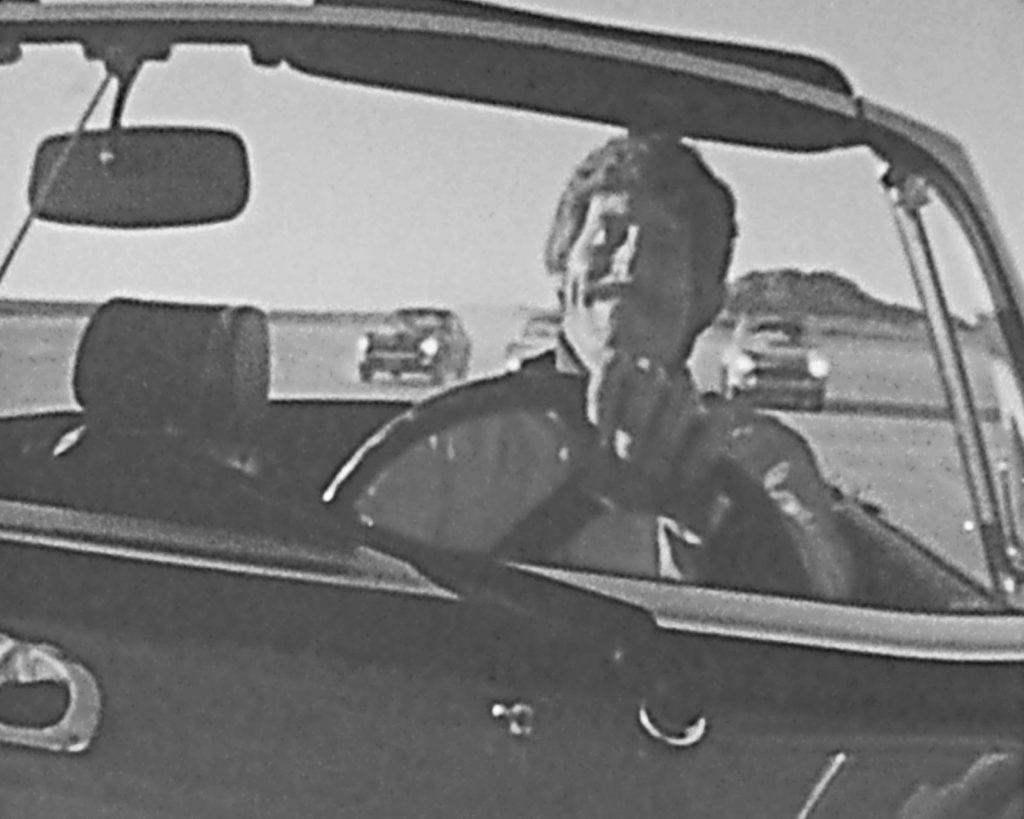
Sweet light, golden light, the magic hour. Photographers have different names for the hour after dawn and the hour before dusk when sunlight softens and imparts its greatest cosmetic lustre. All vehicles photograph best in the sweet light, so on that November day in the California desert in 1972, Burden and the MG’s crew began to set up for filming around three in the morning to be ready to capture the drop at sunrise.
Two red $3695 MGBs from the company’s Los Angeles distributor were prepped to be the hero cars. Interestingly, the distributor, Ernie Rodriguez, had a son, Gary, who had recently graduated from the US Air Force Academy. Rodriguez volunteered Gary, who was home on leave, to be the MG crew’s technical adviser.
The team had to address myriad details. One was that the US Federal Trade Commission, the agency that oversees advertising, insisted the action portrayed be authentic. It had to be a real car that landed and started up and drove away. If not, the spot couldn’t be aired as a TV commercial. So the MGB had to be able to absorb the impact without modification to the suspension system and then have a working lead-acid battery and sufficient gas in the tank to drive off.
A small air armada gathered: two Cessna chase planes, a helicopter, and the Caribou mother ship. Responsibility for the primary camera belonged to the helicopter; a second camera was stationed in one of the Cessnas. As for the second Cessna, it would fly above the Caribou. If by chance the actor jumping from the Caribou dove too fast and passed the MGB, a second jumper would leap from the Cessna above to be in the frame with the dropping MGB. He would then become the driver at touchdown. As the sun climbed in the sky, so did the fleet of aircraft. With the red MGB and actor aboard, the Caribou circled above the desolate desert floor completing its slow climb to 2400 meters.
Wind loomed as a major concern. Dropping a sports car from 2400 meters suspended under a parachute, to a significant degree, qualified as an act of faith, but precautions were taken to ensure the car would land where it was supposed to. Mayhew had the Caribou do passes while dropping smoke bombs to gauge the drift and establish a target area. When all was considered ready, Mayhew, on the ground, counted down, then barked into the walkie-talkie to on-the-scene director Jim Jordan in the Caribou, “Now!”
Hands tightly gripped binoculars. Faces pressed firmly to eyecups. MG’s advertising team silently, breathlessly focused on a winged dot in the sky. First, the drogue chute trailed behind the Caribou and could be seen opening. Its purpose was to pull the platform-mounted MGB with the main parachute out of the Caribou’s cargo bay. The larger main parachute, once free of the plane, would billow out to support the MGB in its gentle descent to earth. Precisely as intended, the drogue chute functioned flawlessly, drawing out the MGB. Then…nothing.
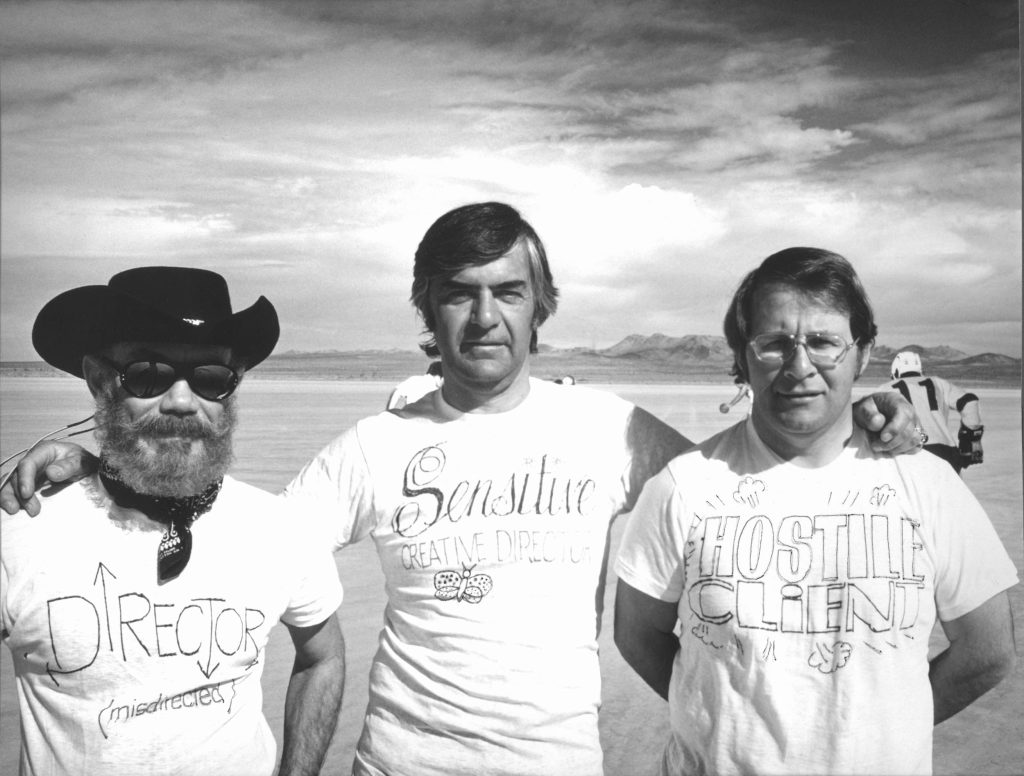
Gary Rodriguez, possibly benefiting from his air force experience, instantly realised something was fubar. He uttered, “Oh!” a split second before the MG team, as one, yelled, “Sh*t!”
The main chute failed to open. Viewed from below, the largely free-falling car gathered speed – if not exactly at a perfect 32 feet per second squared, then at a rate that would have been the envy of any land-bound MGB. Falling with a slow-motion grace, the MGB plunged tail down for about 2100 meters before rolling over, shiny side down, with the platform on top.
The car impacted upside down in a cloud of dust on the desert floor. The combined height of the wreckage measured about 30 inches. When Burden reached this metal pancake, crew members, Burden says, “looked for all the world like mourners at the funeral of an old friend.”
Burden recalls that the loadmaster in advance of the drop was so proud of his rigging that he had volunteered to ride down in the MGB. Burden concedes that back then, at that moment, “I wished he had.” Years later, Mayhew remembered thinking that, if chromed, the wreckage would have made a magnificent base for a coffee table. Upon inspection, blame for the failure was attributed to drogue-chute lines that had snagged bolts on the Caribou bulkhead, rendering the main chute inoperable.
Burden now faced the unpleasant task of reporting the day’s events to Mike Dale, who was in New Jersey awaiting news. Mayhew and O’Leary spent the ride back to the motel fiercely lobbying Burden for the only solution they felt made sense: Try again with the backup MGB. Burden responded that he didn’t have a backup job. Mayhew countered that Burden could only be fired once, whether he destroyed one car or two. With that inescapable logic, Mayhew and O’Leary prevailed.
Burden called Dale and explained what had happened and passionately advocated for a “take two.” Dale agreed there was no other solution, and take two got a green light. It also put Dale in an awkward position, as he was scheduled to have lunch with his boss, Whitehead, the next day, and surely, the first topic of conversation would be the Parachute.
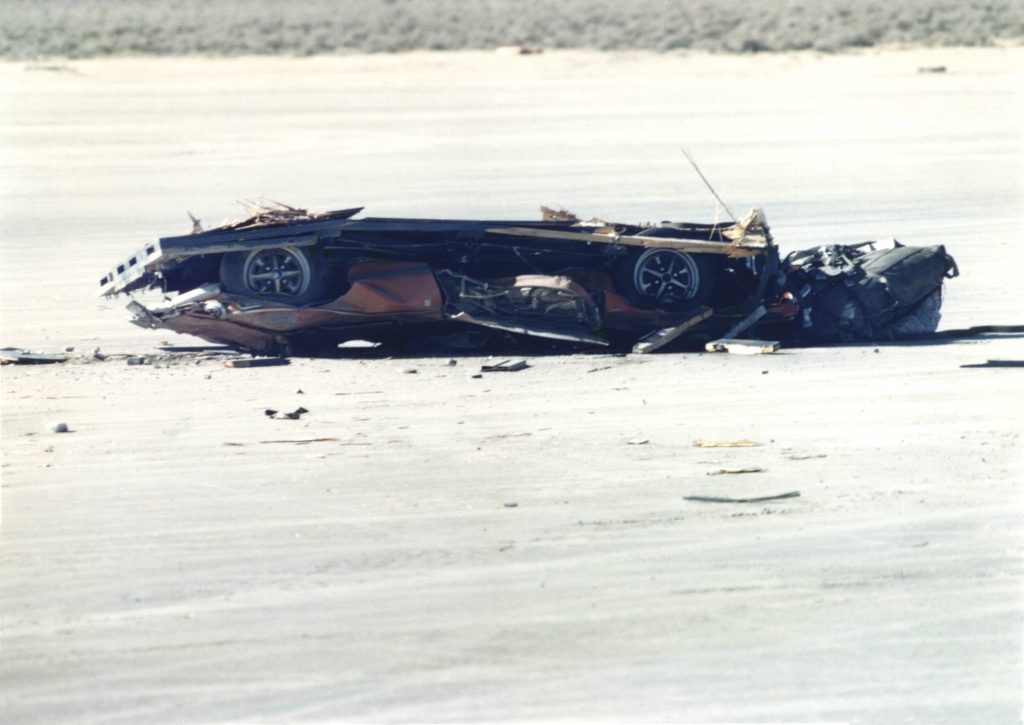
Dawn arrived for take two. Caribou loaded. Chutes rigged. Planes sent airborne. Smoke bombs dropped. It was a go.
All eyes gazed skyward. All thoughts the same: Oh, please, work this time. From the Caribou’s open belly, the drogue chute exited, drawing with it the gleaming red MGB followed by the main chute, which blessedly deployed as planned. Burden’s hero car began its slow, controlled descent to the desert floor.
As the filming was taking place, Dale, awaiting word from Burden, kept delaying his arrival at the executive dining room for lunch with Whitehead. Finally, Dale could wait no longer and joined Whitehead. Unaware of take one’s failure, Whitehead seated himself next to Dale and enquired as to how the Parachute filming had gone. In that instant, as Dale relates, “I was about to start my confession when the phone by my elbow rang.” Excusing himself to answer, Dale heard Burden’s voice: “It worked!”
The Parachute proved to accomplish all that Burden, Mayhew, and Dale desired. At the national MG dealers’ meeting, the Parachute received a standing ovation. It was picked up by media outlets across the country, won a US Television Commercial Festival Award, and was featured in an issue of Reader’s Digest. It elevated MG to the big-time, but only for a brief moment. As the 1970s wore on, MG’s static product line went from ageing to ancient as prices steadily rose. Newer and better-made competitors ate its market share and, in 1980, six years after the Parachute, the lights at MG’s US operation went out.
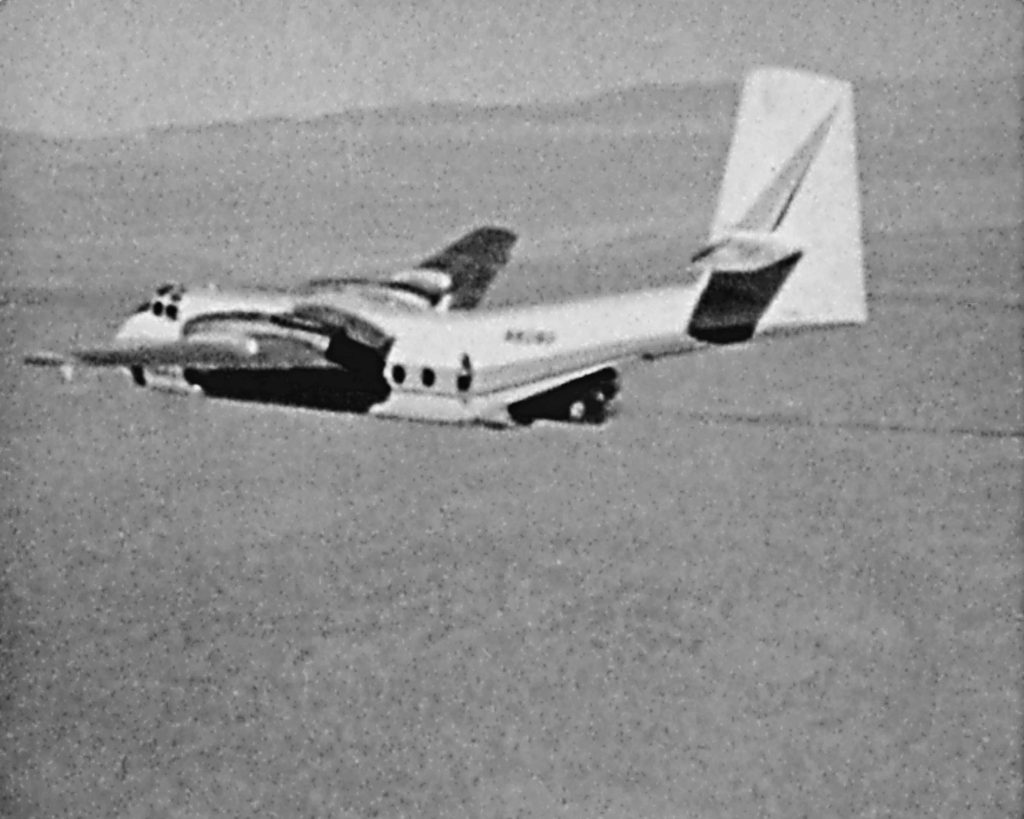
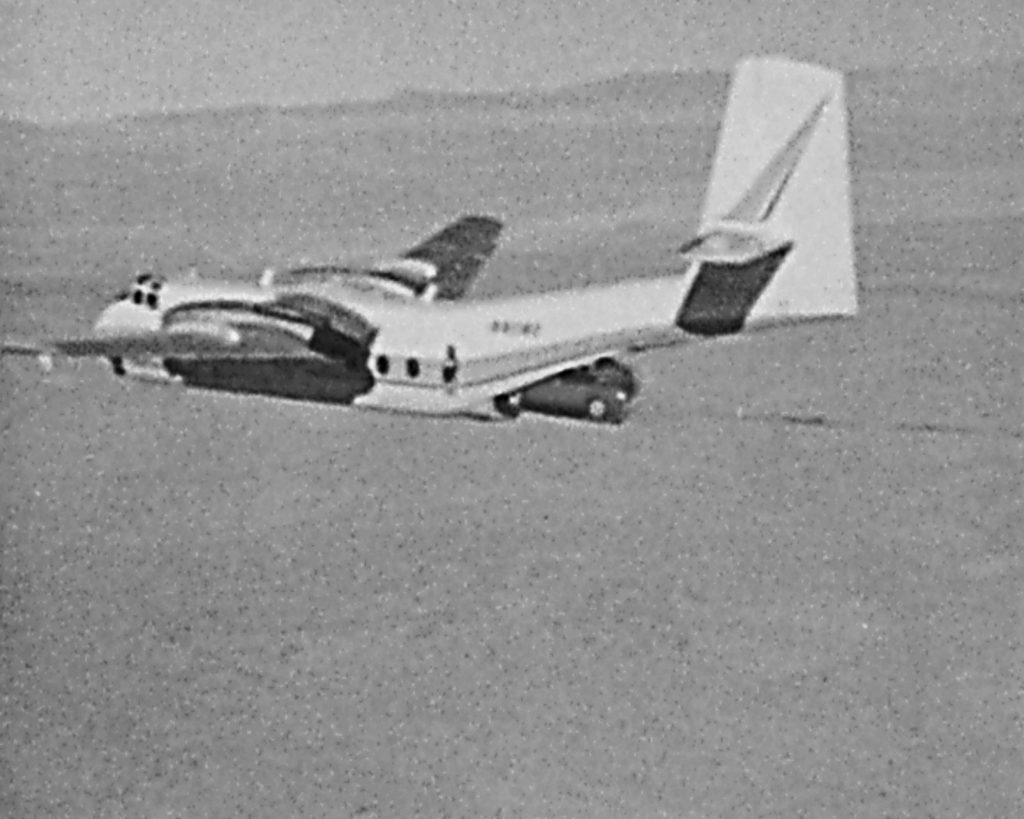
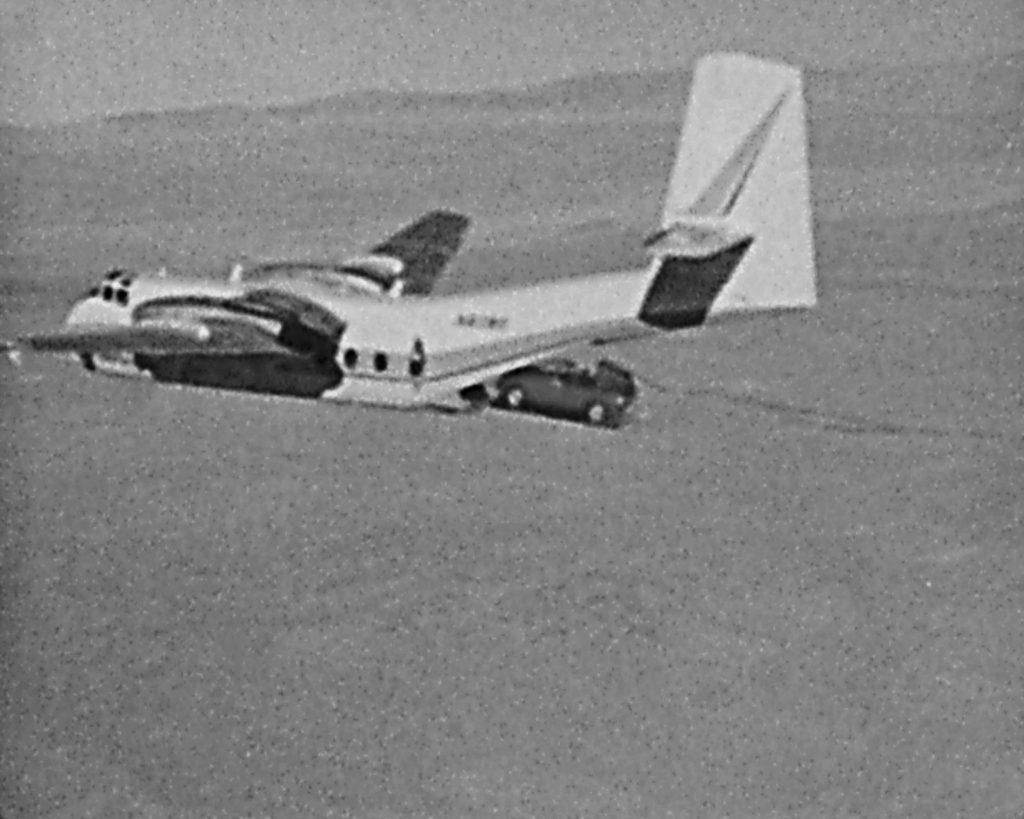
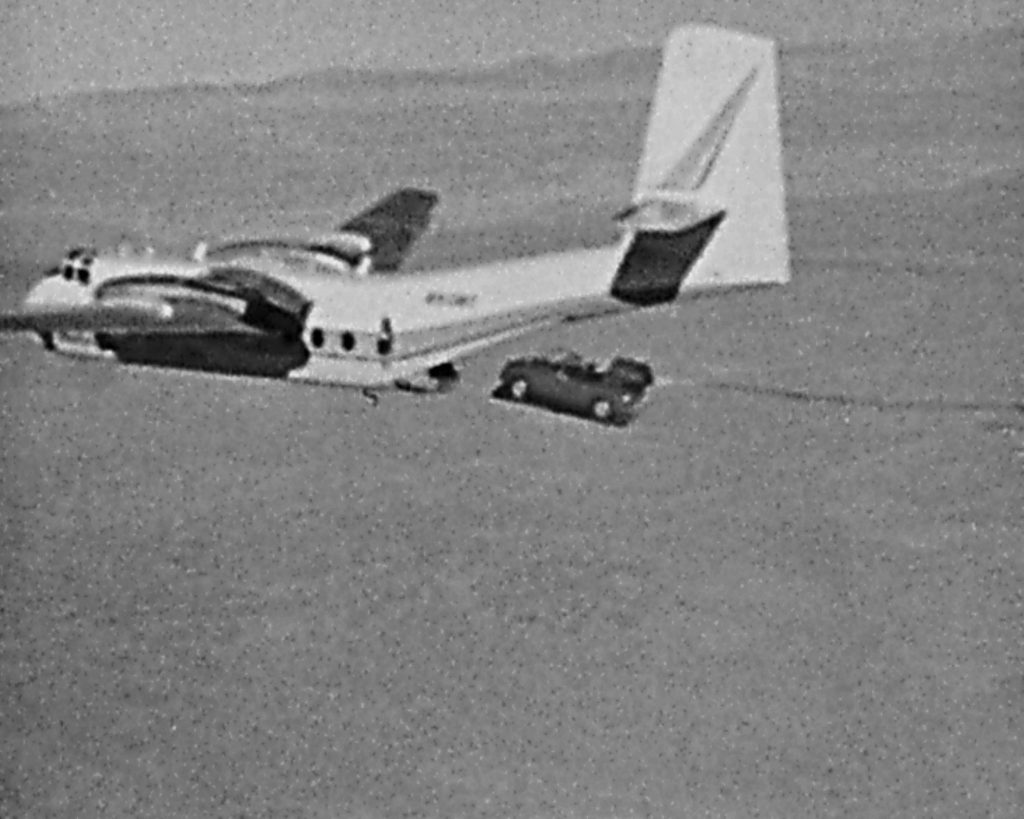
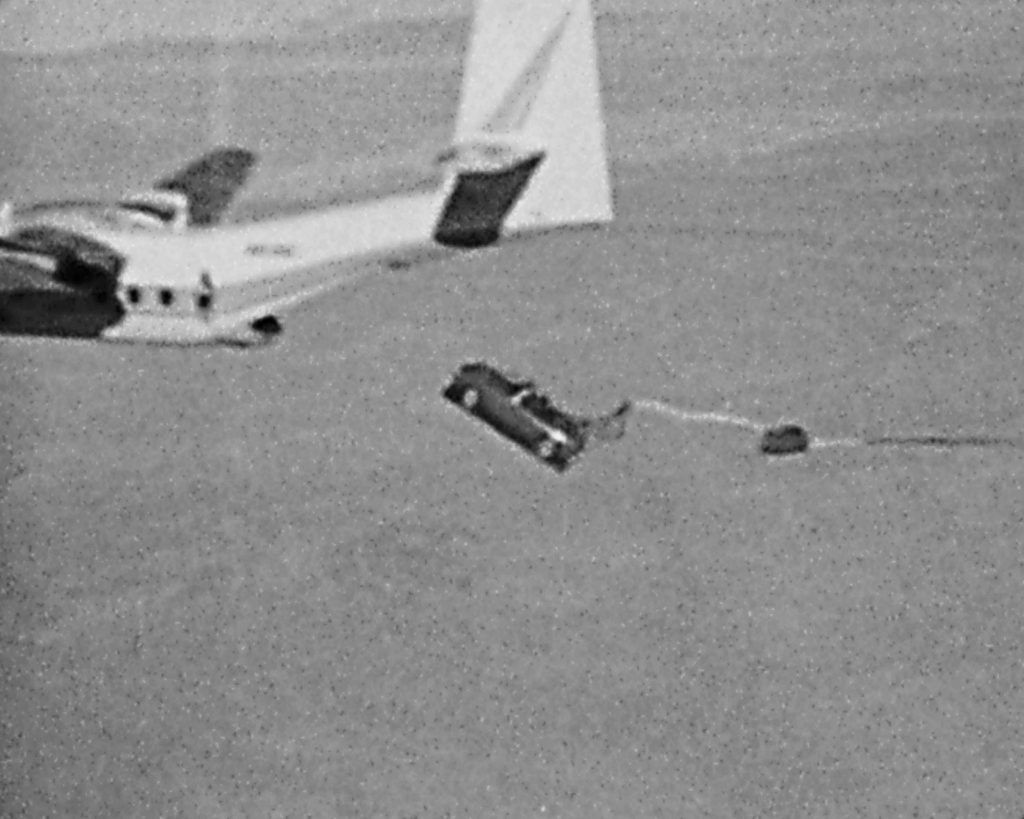
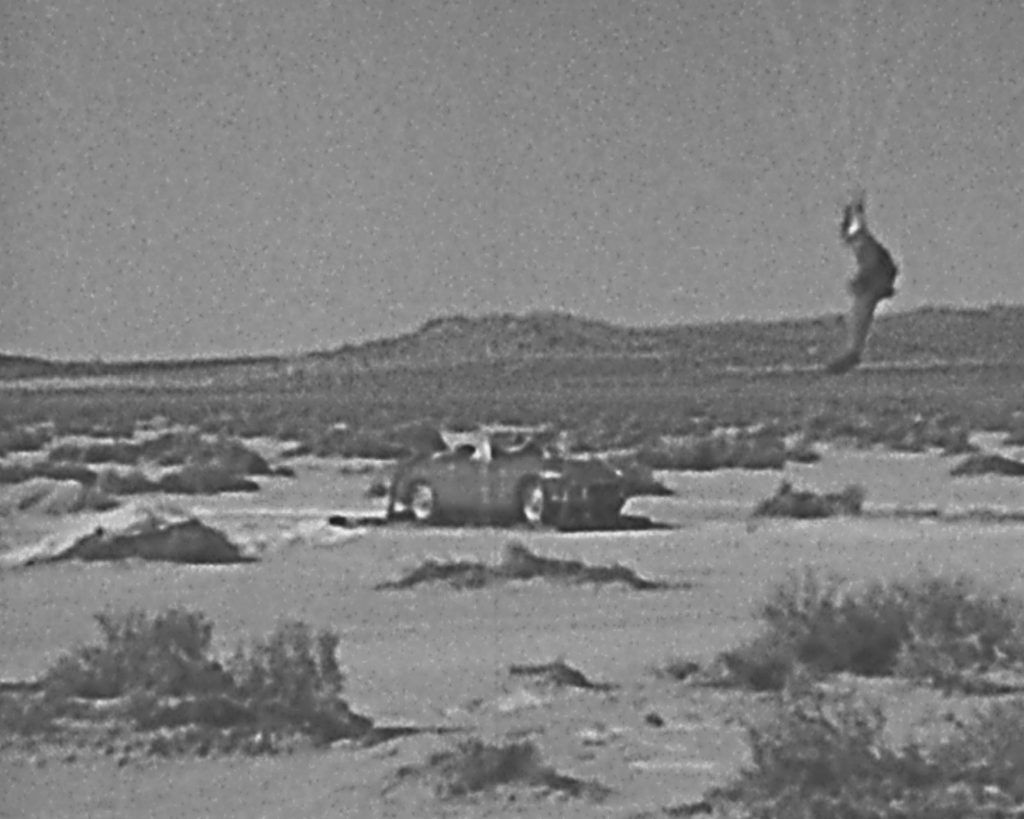
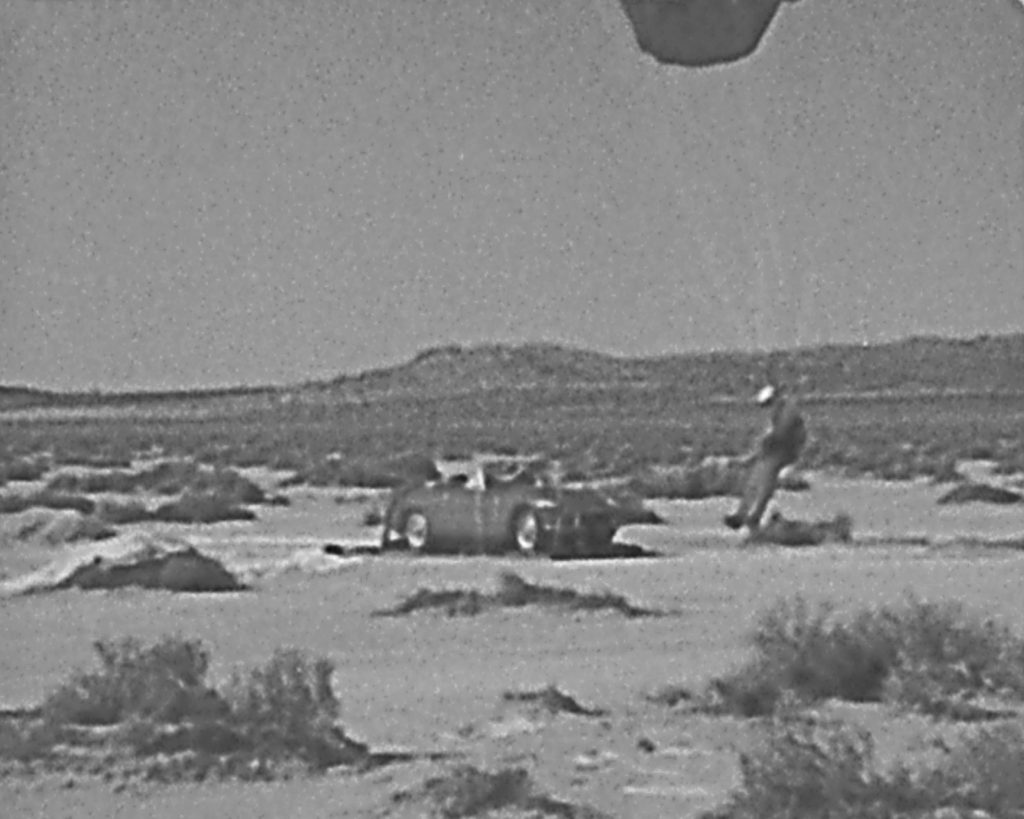
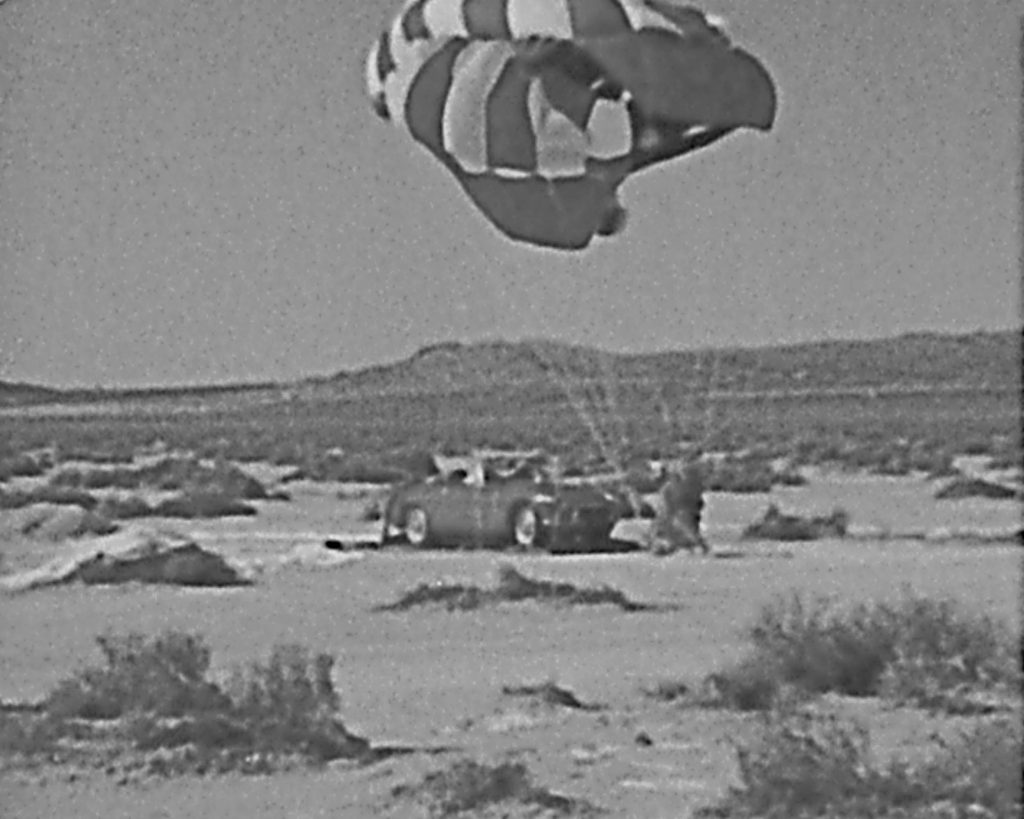
Bob Burden went on to support British automobiles under the British Leyland banner until departing in 1980 to join legendary ad agency Doyle Dane Bernbach. Burden would later return to Jaguar as vice president of marketing, working for his old boss Mike Dale. The former RAF pilot worked in various positions at Jaguar until 2000, when he retired as director of Jaguar Cars after a 37-year career working in the British car industry.
Somewhere buried in Dale’s upbeat report to Whitehead on the Parachute was this case of classic British understatement: “It took a couple of goes, but it worked fine.”
***
This story first appeared in the US in the Jan/Feb issue of Hagerty Driver’s Club magazine.






